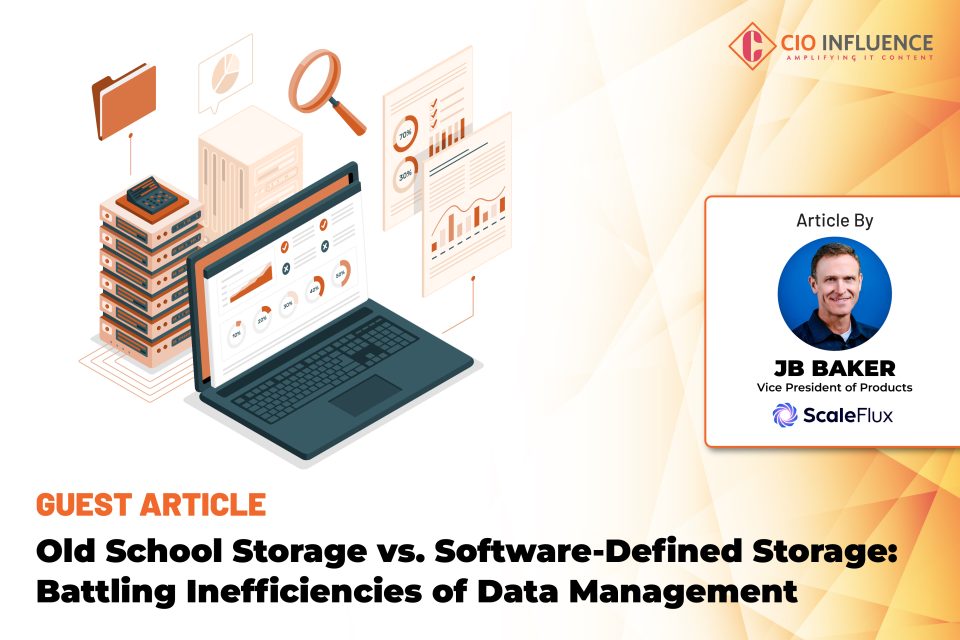As the digital and tech sectors continue to grow, companies face the increasing challenge of managing and storing vast amounts of data efficiently and securely. Traditional storage systems that were, at o*******, the pinnacle of enterprise storage, are starting to show their age. Older systems aren’t efficient enough for today’s fast-moving, data-hungry world. Software-defined storage (SDS) is the new kid on the block, so to speak, as it has all the flexibility that modern data infrastructure demands.
Also Read: The Deceptive Security of Web Application Firewalls
Old School Storage Limitations
Traditional storage systems were basically set in their ways from inception. They were constructed upon proprietary hardware, which, over time, became the standard for businesses everywhere. However, they have several major drawbacks that are slowly coming to the surface with evolving data needs:
- Scalability Issues: Conventional storage systems often struggle with scalability, unable to keep pace with the rapidly increasing volume of data in the industry—projected to reach 147 zettabytes by 2024. Expanding storage typically requires purchasing additional, vendor-unique hardware in large increments, which is both costly and time-consuming. This approach often leads to either excess or insufficient storage capacity, resulting in wasted resources or system overload.
- Costs and Complexity: Traditional storage systems are both expensive and complex to manage. Operating them requires specialized skills, leading to additional operational costs. Furthermore, they are often isolated, making it difficult for businesses to manage their data comprehensively.
Also Read: CIO Influence Interview with Chris Morales, CISO and Head of Security Strategy, Netenrich
Software-Defined Storage: A Better Solution
Flexibility, better performance, and lower prices – this is what SDS brings to the table. These elements are the fundamentals that any contemporary business cannot do without, hence the importance of their presence in said business. With SDS, there’s no reliance on proprietary hardware, giving companies the upper hand to expand as they please.
Flexibility and Scalability
With software-defined storage, the systems are more scalable, independently upgradable, and even more open for the exponential growth of data in enterprises. This is because SDS is inherently flexible and scalable compared to traditional storage.
Enterprises could simply increase the storage capacity dynamically and more granularly based on their growing requirements rather than being constrained to pre-set, system-level expansions.
You could manage petabytes of data with this flexibility, whether on-prem, in the cloud, or across multiple locations. The SDS market is growing fast: 37.02%, to be precise, making it pegged to touch $ 105.07 Bn by 2028.
Ease of Management and Reduced Costs
SDS makes storage management easier. It enables you to manage all your data from a single console and automates many of the tasks that will otherwise be calling for special skills.
This centralization, in turn, diminishes the scope for human errors and drives down operational costs. Not to forget, most SDS comes with the default redundancy and failover capabilities built in, therefore your data will be secured and always on even during hardware failure.
Any data storage solution must prioritize security, especially in Software-Defined Storage (SDS) deployments due to the inherent risks of its distributed nature. When combined with advanced NVMe SSDs, SDS offers enhanced data protection through hardware-level encryption, ensuring data remains secure even if the network is compromised. These SSDs also support TCG Opal standards, enabling secure data erasure and protection against physical theft.
Additionally, SDS benefits from real-time threat detection systems that swiftly identify and mitigate security breaches. Comprehensive access controls, bolstered by the built-in features of NVMe SSDs, ensure that only authorized personnel can access sensitive data, reducing the risk of internal breaches.
Role of NVMe SSD in SDS
SDS does provide multiple benefits, but implementation across high-performance environments poses quite a challenge. This is when advanced NVMe SSDs, coupled with compute engines, come into the picture.
Better and Faster Performance
NVMe SSDs are designed for speed, offering access and transfer rates that are orders of magnitude faster than conventional hard drives. In SDS environments, where rapid data processing is essential for supporting AI/ML, database transactions, and business analytics, performance is crucial. Advanced models of NVMe SSDs enhance this performance further with on-board compute engines that execute tasks more efficiently, reducing latency and boosting overall system performance.
Latency —the time it takes to complete a task— can be a huge choke point. Advanced NVMe SSDs make it even easier to sharply reduce the drive-level latency and improve the latency consistency. This lower latency and faster response times makes applications more productive and valuable.
Modern data management requirements have led to increasing challenges for traditional storage systems with their rigid architecture and limitations. This makes them unsuitable for today’s growing data environments due to a lack of scalability, high costs, and vendor hardware lock-in.
The Software Defined Storage solutions are flexible, scalable, and cost-effective, turning such problems into opportunities for better efficiency and security. Combining SDS with advanced NVMe SSDs, you can overcome the limitations of SDS to build a highly efficient and performant storage infrastructure. As the SDS market grows, it will be a key to helping companies manage their data better and more securely, which will ultimately help them get more productivity from their AI/ML and general computing infrastructure.
Also Read: Implementing a Digital Adoption Platform in Your Organization? This can help!
[To share your insights with us as part of editorial or sponsored content, please write to psen@itechseries.com]


